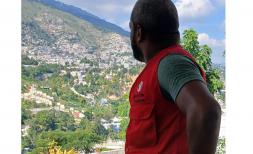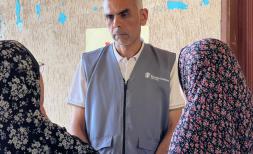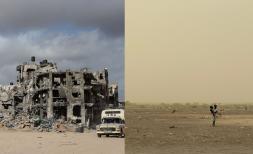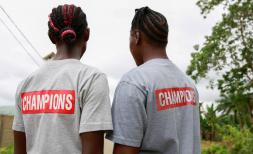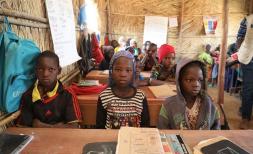One deadline we can’t afford to miss
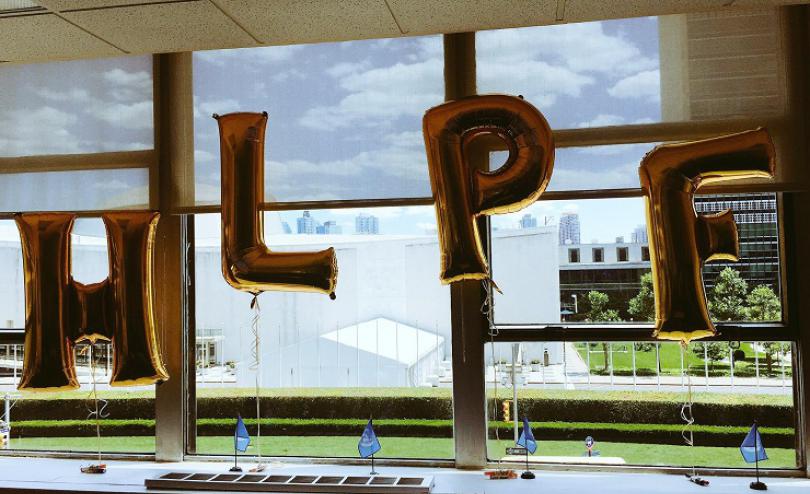
Young people at the High Level Political Forum call for faster progress on Sustainable Development Goals
Almost two years ago, World Leaders agreed 17 Global Goals: from Ending Poverty to achieving Gender Equality, from reaching Zero Hunger to delivering Quality Education for all. These ambitious Goals set out a blueprint for a better and fairer world – with the deadline to achieve them set for 2030.
The clock is ticking.
For Save the Children, the most important part of the Global Goals is the Pledge to Leave No One Behind, which commits countries to putting the furthest behind first. This is no easy task. We know that children from poor households, in remote and rural areas, living with a disability, and from marginalised and minority groups have been lagging behind more advantaged children in their progress. For these children, this pledge has the potential to spur unprecedented change.
We want to make sure that countries are delivering on this Pledge. That’s why we’re in New York taking part in the High Level Political Forum (HLPF). This is the annual moment when we get to see how much progress countries are making towards achieving the Goals and the Pledge to Leave No One Behind. It’s like the end of the school year for the Goals, and some countries are handing in their report cards.
The theme of this year’s HLPF is “Eradicating poverty and promoting prosperity in a changing world” and the Goals they’ll be reviewing in depth are Goal 1: End Poverty, Goal 2: End Hunger, Goal 3: Good Health and Well-being, Goal 5: Gender Equality, Goal 9: Industry Innovation and Infrastructure, Goal 14: Life Below Water and Goal 17: Partnerships for the Goals (which is looked at every year).
Countries have to volunteer to report at the HLPF and this year 44 of them have done so. That’s double the amount that reported last year – an encouraging level of enthusiasm for the Goals. But it also raises questions about just how rigorous the HLPF can be as an accountability moment when the amount of time each country has to report is subsequently so short.
Knowing how little time countries have to report at the HLPF, we’re concentrating our efforts on two areas. The first is to organise events that create the opportunity to get into the nitty-gritty of issues – we’re bringing people from UN missions, national governments and civil society together to talk in-depth about nutrition, child poverty, girls, and the pledge to Leave No One Behind. We want these events to be a chance for countries to share best practice so that, each year, we see more and more progress being made in reaching those furthest behind.
The second area we’re focusing on is demonstrating the value and importance of involving children and young people in the HLPF in a meaningful way. We’re supporting young people from Guatemala and Jordan to take part in the HLPF. They’ll be speaking at events and meeting decision-makers to talk about the issues they’re passionate about so that governments can benefit from the insights that children and young people have. These events are also an important moment for children and young people to hold their leaders to account on progress to meet the SDGs.
Follow the discussion, and join in, using #HLPF2017.

One of our events last week, ‘Bringing children to the table: children’s contributions to implementing the SDGs’, which we co-organised with the other child-focused agencies, was curated entirely by young people from India, Brazil, Chile and Guatemala. They used this event to tell the packed room why the SDGs are important to them and what progress in their country would look like, and to ask the question, “”If young people across the world don’t know that global leaders are here at the HLPF and debating our future, then what’s the point of this forum?”.
Achieving the Global Goals and the Pledge to Leave No One Behind is at the heart of Save the Children’s work. We’re here to support countries in doing so by sharing our experience from the national level, advocating for changes in policy that will accelerate progress for the most excluded children and creating the space for children’s voices to be heard.
We’re already two years in to the 15 years world leaders gave themselves to achieve the Goals. This is one deadline we can’t afford to miss.
